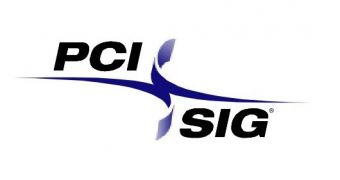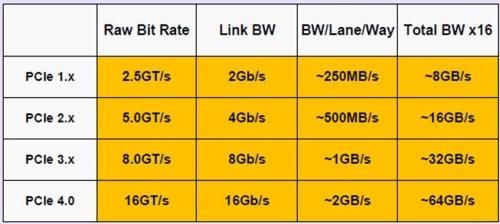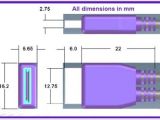Since 2011, the mysteriously named PCI SIG (Special Interest Group) has been hard at work researching the next step to the main motherboard bus platform that serves basic connectivity for a wide range of industry products, varying from graphics cards, sound cards and SSDs.
Although plans to move to PCIe 4.0 is known for years, as we covered the first news on this plan in 2012, the development for the new PCIe platform moves forward and is expected to be finalized by 2017. Apparently, it will use a new connector and will be the last copper version of the PCI Express.
The data transfer rate targeted at the PCIe 4.0 is 16GT/s (gigatransfers per second), per lane, a target considered too unrealistic using a wide bus with copper interconnects. Besides that, developers have to build systems and peripherals that are compliant with the PCI Express 4.0 specification.
Apparently, developers at PCI SIG have not reached a consensus on the maximum length of PCIe 4.0 traces without retimers.
It's time to leave copper behind
According to an interview given to EE Times by Al Yanes, president of the PCI SIG, “The base distance is still being validated but it’s typically 7 inches or so. Longer channels of 15 inches or so with two connectors will have retimers, but Gen 3 has used retimers – now we will need to use them for shorter long channels.”
Being a copper connector similar to 3.0 in materials used, it will be fortunately backwards compatible, meaning you’ll be able to use today’s add-in-cars in future 4.0-based systems, but future AICs won’t work with PCIe 3.0. Future transfer rate possibilities suggest 16GT/s will mean about 2GB of data per second at PCI Express 4.0 x1 format and 32GB/s for PCI Express 4.0 x16 slots for graphics cards and ultra-high-end solid state-state drives. Interestingly, mobile devices will also last much longer per data transferred since it will take less time to transfer the same data.
Al Yanes offered an inevitable glimpse into the future as the PCIe 4.0 draws near. He considered that the 5th-generation PCIe ports will rely on optical instead of copper links. He considers this major change will happen in the next decade. As supercomputers’ major hindrance factor today is bandwidth, optical solution for data links will quickly become mainstream and commonly implemented by the wider industry.

 14 DAY TRIAL //
14 DAY TRIAL // 


